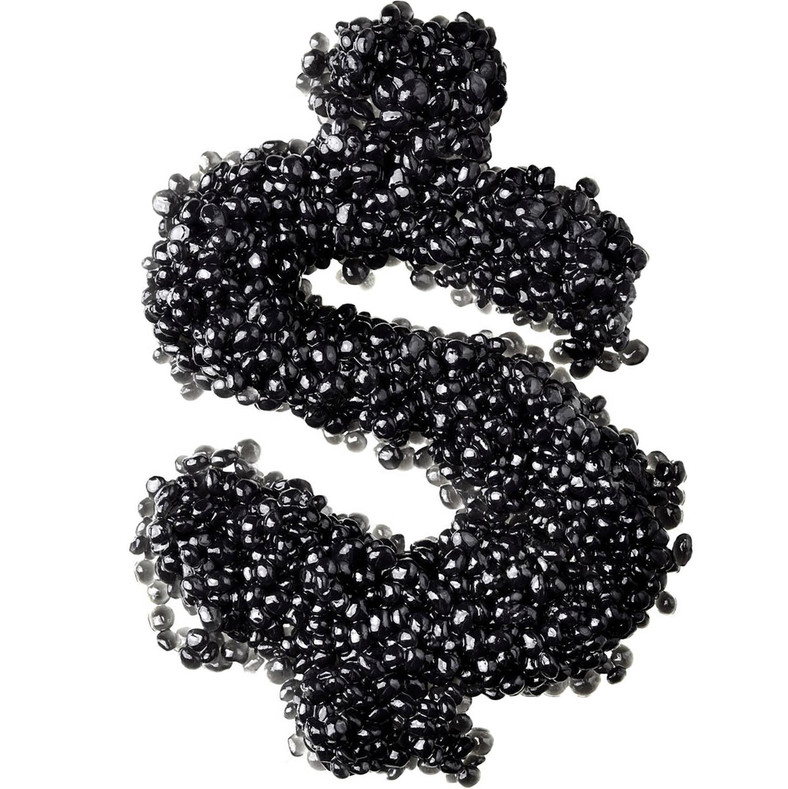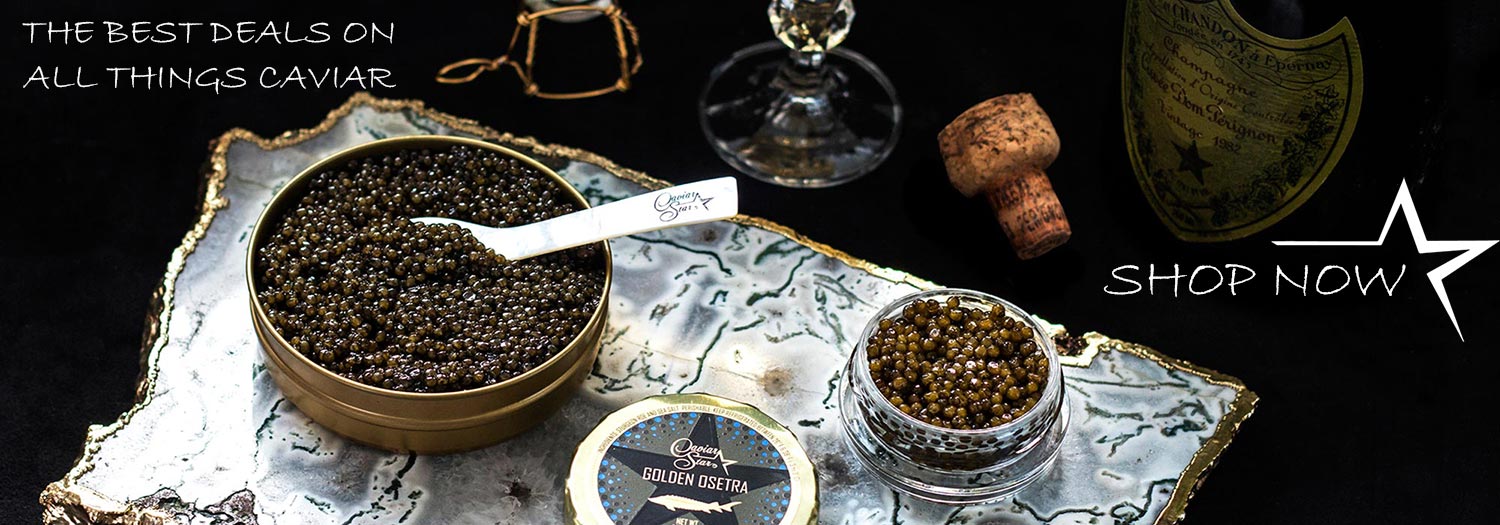Top 10 Caviar Purchasing Tips: How to Order / Buy Caviar Without Going (Totally) Broke

"No one, not even billionaires, eat at Per Se all the time. Nine rich courses is too much for everyday eating. Nor does anyone feast at Noma every day that it’s open. Reservations are too tough to come by, and no one wants to dine for four hours more than once a year. But if I had a few extra quid lying around, I’d eat caviar morning, noon, and night. It is my fig on a plate, a dish that reveals more about where it came from and how it was processed rather than what a chef did with it. It is one of the world’s most perfect foods."
- How to Order Caviar Without Going Totally Broke - Eater.com - Ryan Sutton
"When it comes to fancy New Years Eve snacks, caviar is king. But it can be daunting: isn’t it super expensive? How do you know which kind to buy? And how the hell do you serve it?"
- How to Buy Caviar Without Going Broke - GQ.com - Paula Forbes
"Caviar can be an acquired taste, and like many expensive foods prized for the complexity, there is a learning curve when it comes to appreciating their subtlety. Dive right into the deep end with the more expensive caviars, and most likely those more delicate flavors will be missed on you, and your money will have been wasted."
- Serious Eats Guide: How to Buy Caviar - J. Kenji López-Alt
The above articles are chock-full of buying tips for consumers new to caviar or looking to save some money on a normally expensive delicacy. We have highlighted the best recommendations from these posts along with our own knowledge as a long-time caviar seller to comprise the following "Top 10" caviar buying tips from Caviar Star:
1. Prepare yourself for the higher price tag - While we are focusing here on the ways to save money when buying caviar, it is important to remember that caviar is generally a rare and expensive specialty food. We don't say "expect to spend lots of money" because you can definitely find good quality caviar for less than the prices stated in the Eater article if you know where to look. However, having a great caviar experience is rarely a cheap affair. Considering all the production, storage and shipping costs involved in safely delivering a spoonful of fish eggs to your mouth, the expense should come at no surprise. Have an idea for how much you want to spend before sampling one of everything.
2. Plan on eating at home to save money - Restaurants might be incorporating fish roes into their menus more than ever these days, but the traditional "a la carte" caviar service offered at many fine-dinning establishments is usually marked above retail value. High-end chefs do offer exceptional quality caviar, often from traditional top-shelf sturgeon like osetra, with a flavor and texture most fitting to their palate. Ordering online or buying at local grocery stores and caviar outlets is almost always cheaper than eating it at a restaurant, but you'll need some caviar knowledge to sort through all the options available on the retail market. On top of that, if you want to recreate the five-star experience you get when dining out then you might have to arrange your own caviar presentation and accompaniments.
3. Learn the common and Latin names - The type of caviar you decide to order is important; make sure you get the right stuff. If you are going to spend money on it, don't get "hoodwinked" by someone selling you a cheaper roe labeled as a more expensive caviar. Understanding the most common caviar species and learning the popular names for their caviar can provide the assurance that you didn't overpay for your roe. When eating out or buying retail, top-dollar caviar should always have its proper name provided. If you ever have any doubt, check the lid and look for the scientific / Latin name. With all the marketing lingo and made-up terms in the caviar industry, learning the Latin names of your favorite caviar types is the best way to identify the species that made the eggs.
4. Try different caviar types and styles - Not all fish eggs are created equal, but just because one caviar is more expensive than another doesn't mean it's going to be more enjoyable to you. Caviar can come from many different fish species and be produced using varying methods. Each individual harvest, and each individual fish can produce differing eggs even when from the same species produced in the same region. Much like wine, every caviar is unique and there is no best type or vintage. Instead, you need to discover your own favorites by trying numerous types and uncovering the "15 caviar flavors" that vary between products. No one becomes a caviar sommelier overnight, so start with the entry level roes and work your way up to the top-dollar sturgeon roes to find which roe at what price point makes the most sense to your wallet. When experimenting, avoid excessively salty, frozen or pasteurized caviar, as the fresh malossol product is superior and more easily reveals its subtle characteristics.
5. Understand the various textures - Just like with caviar's flavor, there are a wide range of textures that can differ between species and production methods. Some caviar textures, like the extremely soft and mushy or firm and chewy, should be avoided though. Pricey sturgeon roe will be firm, not wet, with plump eggs you can feel as you chew, but not all caviar gives the "pop in your mouth like bubble wrap" experience that people expect. The most expensive fish eggs are never as large and snappy as those from trout and salmon or crunchy like tobiko roes - products sold at a fraction of the price. While firmness is an important factor in determining quality, and softer, smaller caviar is generally cheaper, don't be disappointed when the extra cost doesn't get you the texture you expected. The feel of the eggs on your tongue is part of the caviar experience, so avoid wasting unnecessary funds and learn about how the different textures of these roes tend to be from one another.
6. Estimate how much caviar to order - Most tasting venues will provide 15 to 30 grams for their caviar service: an amount that and individual person can eat in several spoonfuls. When ordering outside of restaurants you will rarely find the same level of guidance when asking "how much caviar should I order?". Many retailers will try to convince you that you need to buy more, or get you to stock up on roes you can save for later in your fridge or freezer. Remember that caviar does have a shelf life, so it is best to order only what you, your family and/or friends can eat in a month. We recommend at least 1 ounce per person when catering to a party of caviar lovers, but inexperienced caviar eaters should go for about 1/2 an ounce or 15g per person. You'll want to have enough product so that everyone can partake, without having lots of leftovers that will lose quality over time.
7. Only buy what you need - In addition to getting the amount of caviar you need, you should figure out what you want to do with it. Are you eating it right off the spoon or serving it with accompaniments? How should it be presented? There are so many accessories and complimentary foods offered in the retail caviar market that you might think buying some fancy caviar pairings is an absolute necessity for proper enjoyment. Restaurants include these as part of their caviar service, but that doesn't necessarily mean you should have any of the same items at home. Gift sets, serving dishes and utensils can help make you look like a professional caviar taster, but none of these are mandatory. Don't want to buy the expensive mother of pearl spoons and servers? Just use plastic ones. Maybe blinis and creme fraiche are your thing, but maybe you find a baguette and butter to be just as good with caviar smeared on top. Bottom line is; make sure you like the product first before investing in caviar serving ware, accessories and accompaniments.
8. Properly store your caviar - When you receive your caviar you should plan on serving it at its optimum freshness. Don't let it lose quality or spoil. As an expensive product, caviar can be especially painful to throw away after mishandling. Since most households don't have the same level of culinary expertise and food storage equipment you find in a professional kitchen, those handling perishable products in their homes should follow the seller's safety suggestions. Fresh low-salt caviar can keep its quality for 4 to 6 weeks at 26° to 36° F, but household refrigerators are rarely set that low; having an internal temperature of 40° F on average. Again, you don't want to freeze the good stuff, but following suggestions like surrounding the caviar with frozen gel packs / ice in the refrigerator (or even just turning your fridge temp down a little) can prolong the caviar's shelf life. Always check the coolness of your jar or tin as well as the vacuum seal upon receipt. Once opened and exposed to air the caviar should be consumed within 10 days max, so knowing how to store caviar both before and after eating it can save you from throwing away money.
9. Serve the roe like a pro - Keep your sealed caviar container chilled until serving, but don't just dig-in right out it fridge either. Caviar needs to warm up a little to reveal its best self. The closer the eggs get to room temperature the more apparent their taste becomes, but when too warm they can become soft and oily, sometimes revealing off-putting flavors that were otherwise hidden by cold temperatures. Leave the jar or tin out for approximately ten minutes, open it up and put it on ice safely so that when the ice melts it doesn't get into your product. Before you can finally enjoy your caviar, everything that goes along with it should already be prepared. There are so many wonderful ways to present the eggs, and lots of other ingredients and accompaniments to choose from when using caviar. Try to collect some ideas from the pros on how to serve it and what to add to it, and remember, if you're trying fine caviar for the first time try not to go overboard on your caviar service.
10. Know the best ways to enjoy it - There are so many great food and drink selections to pair with caviar it might seem overwhelming. Many different beverages, both alcoholic and non-alcoholic, can help bring out the subdued nuances of a roe, while certain food additions can help balance the overall experience. Of course before you add too many other contributors to your caviar feast, get a taste of the product by itself to grasp it's unique profile. You might find some types go better with champagne than others, some might need a little more creme fraiche or scallion to take the edge off, and other types are best used as culinary ingredients or should be saved until the following morning to top scrambled eggs or bagels and cream cheese. With so many different types, styles, flavors, textures, preparations and applications to choose from, planning on how to use your caviar before you buy can save money in the long-run. There is no right or wrong way to enjoy, but after dishing out the dough for your roe try to make eating it comfortable and care-free occasion.
Sources
https://www.gq.com/story/caviar-buying-guide
https://www.eater.com/2018/12/27/18156538/how-to-order-caviar-restaurants-dining-out-caviar-differences-beluga-osetra
https://www.seriouseats.com/2013/02/the-serious-eats-guide-to-how-to-buy-caviar.html



 (888) 268-8780
(888) 268-8780
